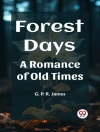In 'The Motormaniacs, ’ Lloyd Osbourne presents a riveting exploration of the nascent automobile culture at the turn of the 20th century. The narrative seamlessly intertwines humor and adventure, capturing the exuberance and chaos that accompanied the rise of motor vehicles. Through vivid descriptions and lively dialogue, Osbourne paints a portrait of eccentric characters swept up in their obsession for speed and exploration. Set against a backdrop of technological innovation, the novel reflects the anxieties and exhilarations of a society on the brink of modernity, engaging readers with both its wit and its insightful commentary on industrial progress. Lloyd Osbourne, a notable figure in literature and the stepson of the legendary author Robert Louis Stevenson, was deeply influenced by the vibrant cultures he encountered during his travels. His experiences in America and Europe, juxtaposed with his intimate knowledge of storytelling, informed his ability to weave together the thrills of adventure with the nuances of societal change. Osbourne’s unique perspective as a participant in the literary community and as a keen observer of human behavior stands out in this work, marking a significant addition to early 20th-century literature. I highly recommend 'The Motormaniacs’ to readers intrigued by the intersection of technology and society. Osbourne’s deft characterization and witty prose offer not just entertainment but also a critical lens through which to view the evolution of modern life. This novel serves as both a captivating read and a thoughtful reflection on the transformative power of the automobile, appealing to fans of both historical fiction and social commentary.
O autorze
Lloyd Osbourne (1868–1947) was an American author of Scottish descent and a significant literary figure noted for his collaboration with his renowned stepfather, Robert Louis Stevenson. Born in San Francisco, Osbourne grew up under the literary influence of Stevenson, which contributed immensely to his development as a writer. His noteworthy contribution to literature includes his work on 'The Motormaniacs’ (1905), an early exploration of the automobile’s influence on society and a revelatory depiction of the burgeoning car culture of the early 20th century. Osbourne’s literary style often encompassed elements of adventure and humor, resonating with the energetic and transformative period he lived in. Although 'The Motormaniacs’ stands out amongst his works, Osbourne collaborated on several books with Stevenson, such as 'The Wrong Box’ (1889) and 'The Ebb-Tide’ (1894). His narratives are marked by vivid imagination and a descriptive flair that enlivens his settings and characters. Despite his compelling works, Osbourne’s literary legacy is somewhat overshadowed by the stature of his stepfather, yet his contributions to the genre of early motor fiction and his role in the collaborative works are recognized by enthusiasts of the era’s literature. His writings not only entertain but also serve as a window into the early 20th century’s societal changes brought about by technological advancements.












